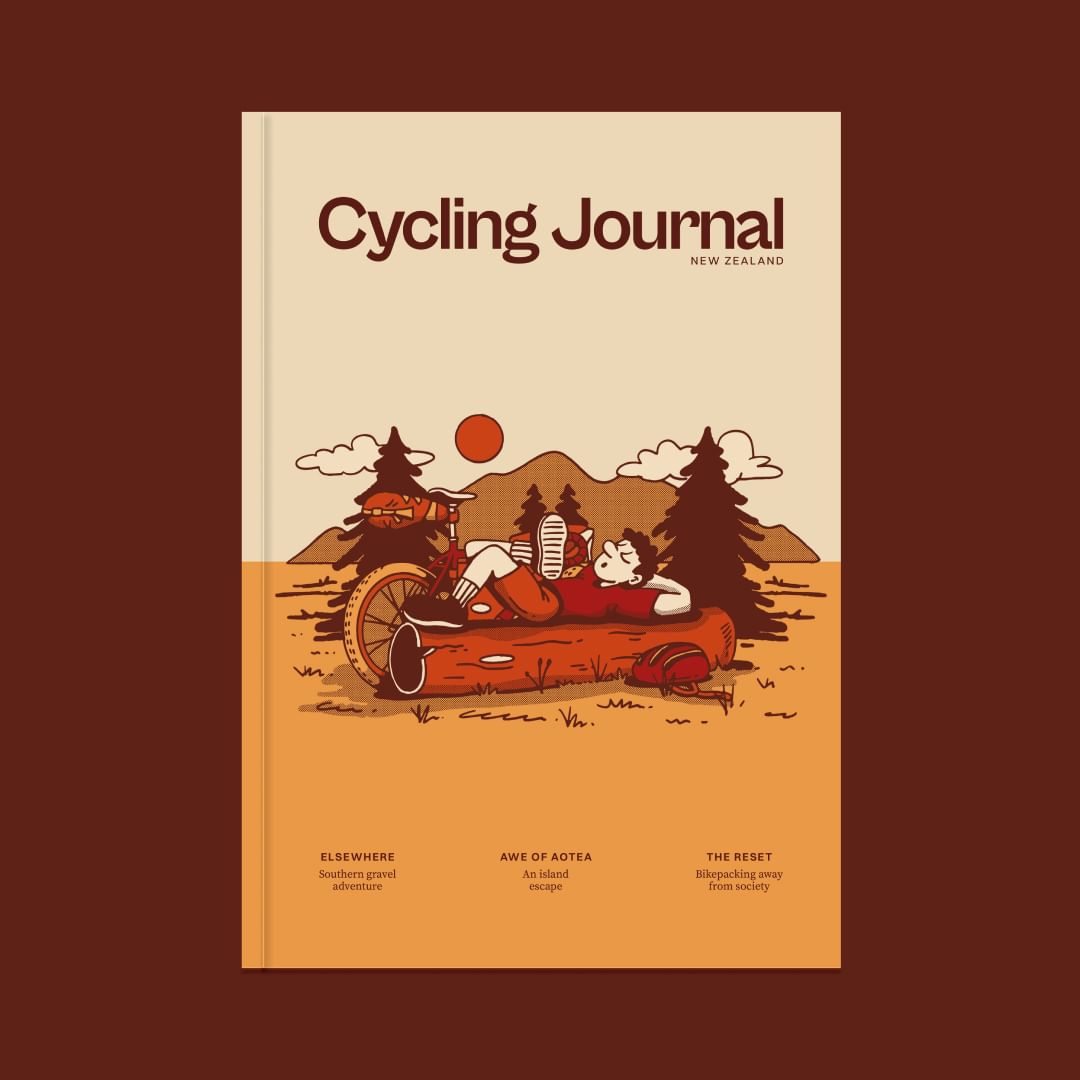Words: Liam Friary
Images: Riley McLay
There are not many cycling brands that hail from our shores; however, Chapter 2 goes against that trend. The brand has been around since 2017 and continues to add road and gravel models to their niche fleet. A more recent addition to their line-up is the Kaha, which is a ‘gravel race’ frameset. As gravel continues to expand, the category gets more segmented, with a clear line between ‘adventure’ and ‘race’ being the most distinct. The ‘race’ label does exactly what it says on the box, aimed at those long, arduous gravel races such as Unbound or, closer to home, Edition Zero. The Kaha is a pure-bred race machine utilizing aero tubing, integrated cabling and, if one inclines, an aero cockpit named the MANA GRVL.
As Chapter 2 comes only in framesets, there was freedom to build up the bike with the spec of my choice. I like this factor as you can then have all parts and components that you desire. I chose a SRAM Apex AXS 1x drivetrain with a 40T up front and 10/52 cassette, laced with Berd Sparrow wheelset and Continental Terra Trail tyres set up tubeless. I also added the MANA GRVL cockpit at the smallest size of 80x469mm, as this was the best fit for me regarding short stem length. However, the bars were very narrow at 380mm hood to hood, which is the smallest I have ever ridden. For the 27.2mm seat post, I opted for the RockShox Reverb AXS XPLR to ensure I could get the seat out of the way for rowdier gravel sectors.
Keeping things current with wider tyres, there’s enough room for a 47mm tyre on either 650b or 700c wheels. I’d like to see a bit more room for a 50mm or larger tyre, especially when riding Aotearoa’s gnarlier gravel roads. The fork and frameset have a ton of attachment points for bottle cages, fenders, and racks – there are 24 of them! This is great but a little strange on an all-out gravel race bike where speed rules over carrying any luggage. I suppose it does tick the box for versatility. The storage doesn’t stop there either, as the frame also incorporates a downtube storage box. This is something we’re seeing from more cycle brands, and I think it’s a must in modern frames. It simplifies things as you can stash repair items and ride snacks easily without adding any bags onto the frame. This is great when riding in relaxed clothing such as a tee and bib, as you often don’t have any spare pockets. Looping back to the storage box, it opens simply with a flick of a lever beside the bottle cage and comes with a neoprene bag designed to hold a spare tube, tools, and accessories.
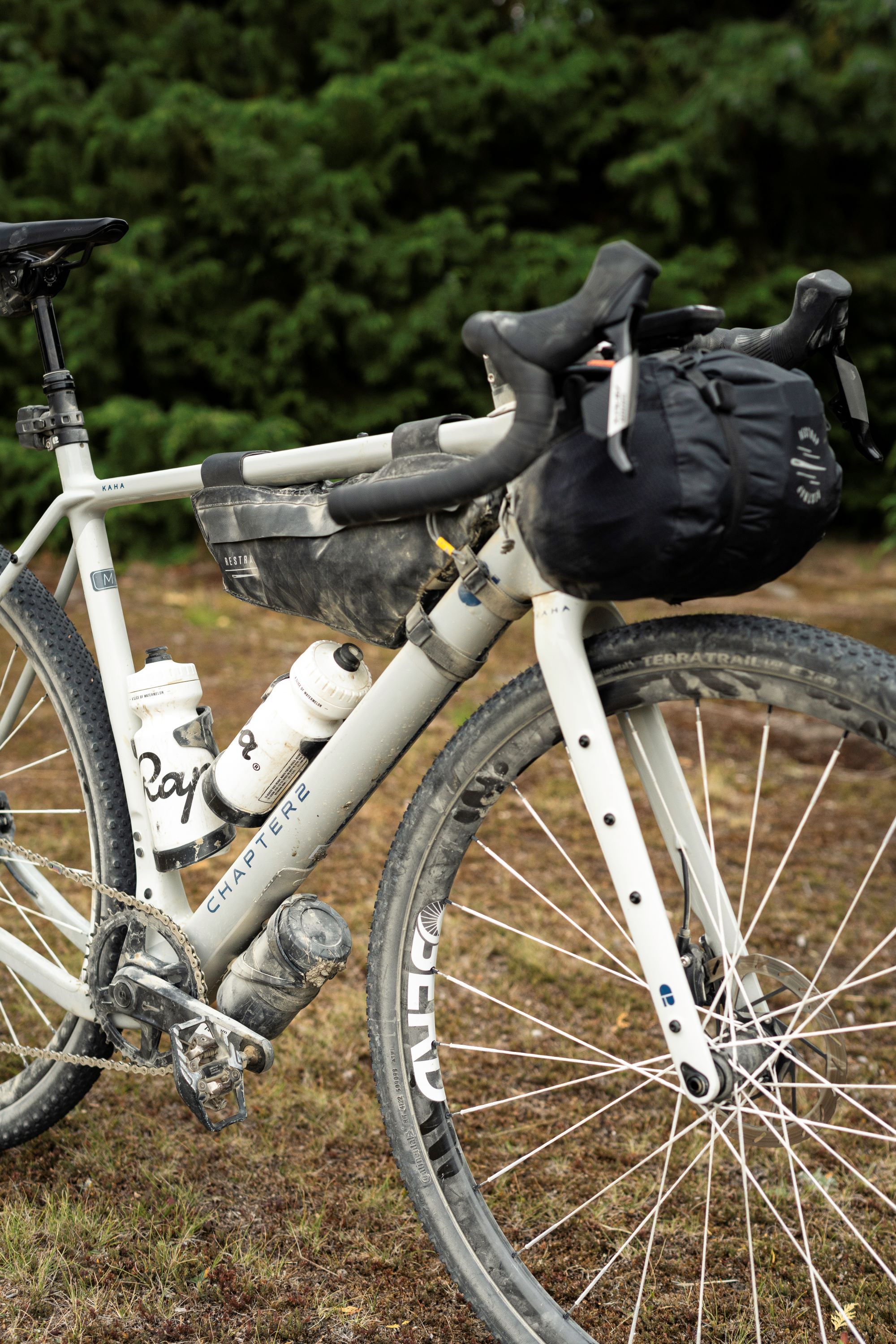
To keep gravel debris at bay, there’s a rubberised protective plate which keeps the frame from being damaged by rocks and gravel. There are also some mounting bolts to carry a third bottle or a storage keg on the underframe area. The bottom bracket is very critical when it comes to gravel, grit, dust, and grime with off-road bikes, especially with sealing and reliability. The KAHA frameset uses a T47 threaded BB. The medium-sized review bike has a 571mm stack, 395mm reach, and 72-degree head angle, plus a wheelbase of 1024mm. The naming convention of all Chapter 2 frames follows Māori lines, and KAHA translates, quite appropriately, to ‘Power & Strength’.
I have been aboard the Chapter 2 KAHA for the last six months. After building up the bike, I packed it up and headed down to the South Island for a three-day bikepacking trip. Perhaps this is the best way to get acquainted with a new bike?! I suppose 15-20 hours of straight saddle time lets you really understand the bike’s capabilities and characteristics. The first day was over 5 hours on 90% gravel roads. The clear standout was the stability, being planted across the numerous gravel sectors from champagne to loose gravel. The acceleration in and out of corners and dicey gravel descents was evident as it got up to speed very efficiently. Once up to speed, the bike seemed to ride better when over 25kph, and with a low-profile front end, you can tuck away from the wind. I climbed off the bike after that ride, and I wasn’t completely broken, which says a lot for the first day riding the KAHA. In fact, the overall comfort from this ‘race-bike’ impressed me, as often more race-focused frames aren’t the most compliant.
The three-day ride trip eventually ended, and I have taken the KAHA on local roads since then. I have been impressed with climbing, both on technical and steep climbs. The shorter rear end helped keep weight over the rear wheel, which meant I could push hard without slipping or losing traction. This is especially evident when terrain tilts over 10% on loose gravel. On the other side of the climbs, the descents, especially when longer and on harder terrain, weren’t the best. I couldn’t get comfortable with the speed and control, and the smaller handlebar, even with flared 469mm at drops, didn’t allow for the most comfortable position. It’s not noticed on shorter descents, but on extended ones, it’s evident.
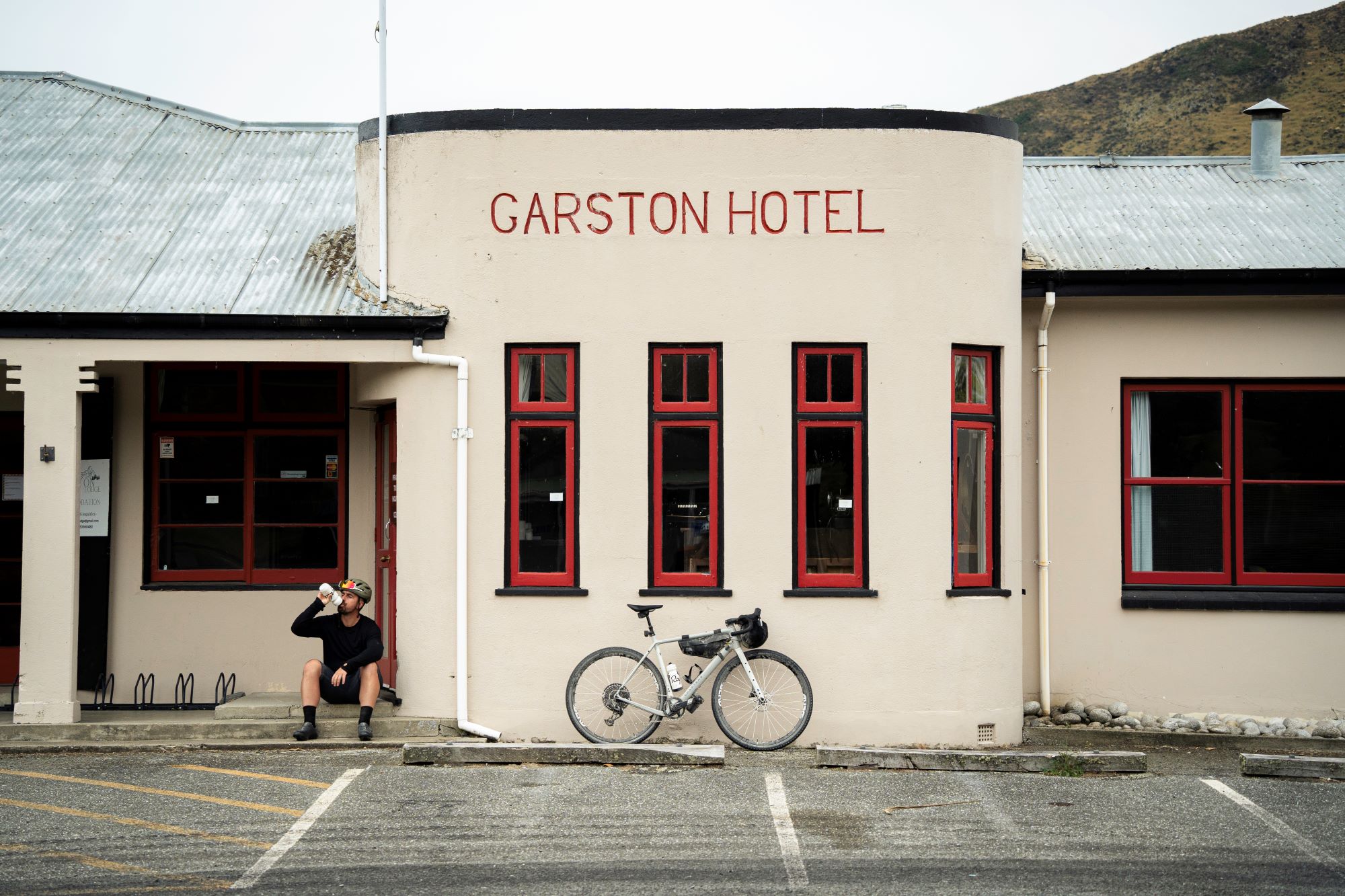
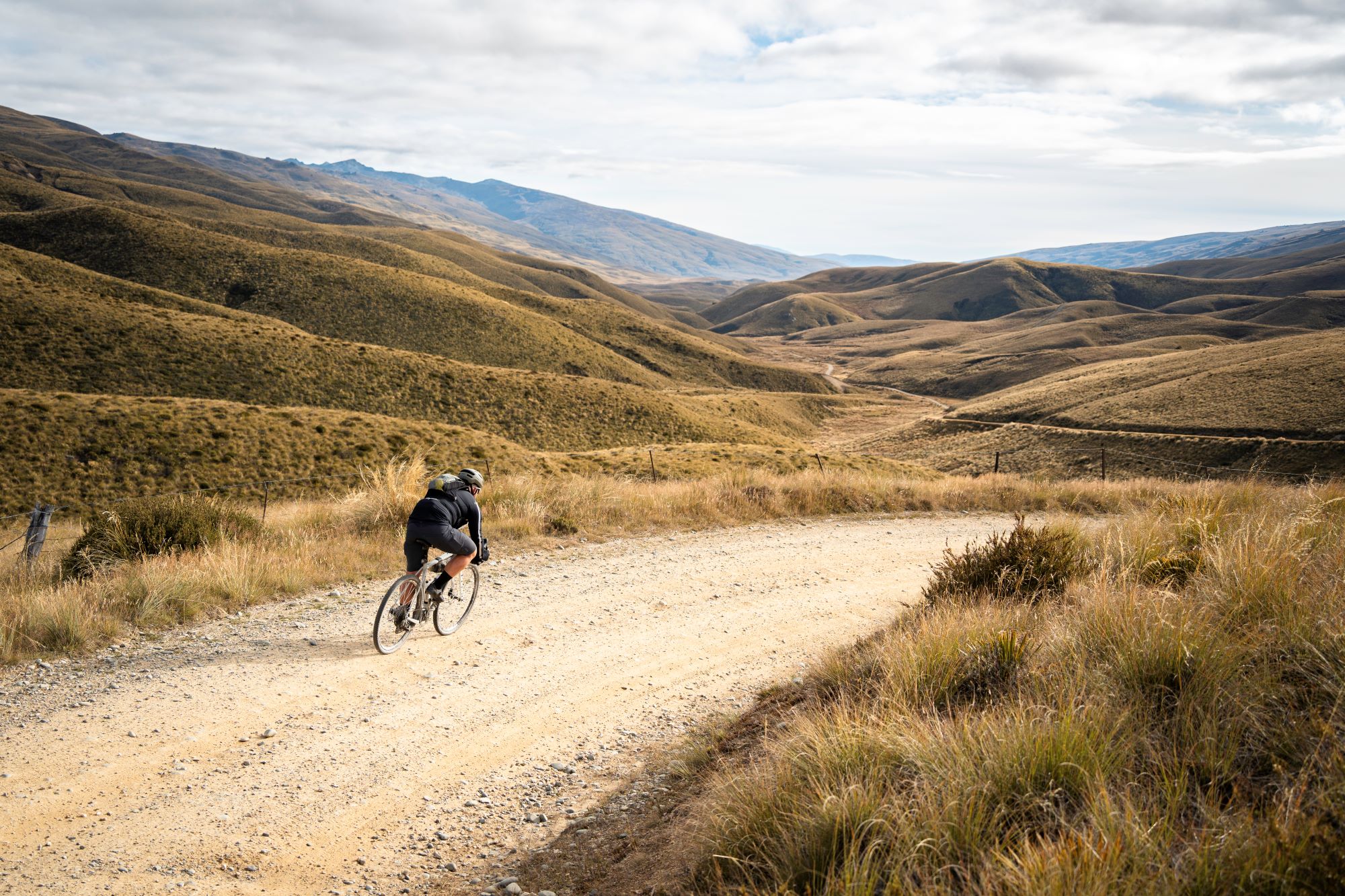
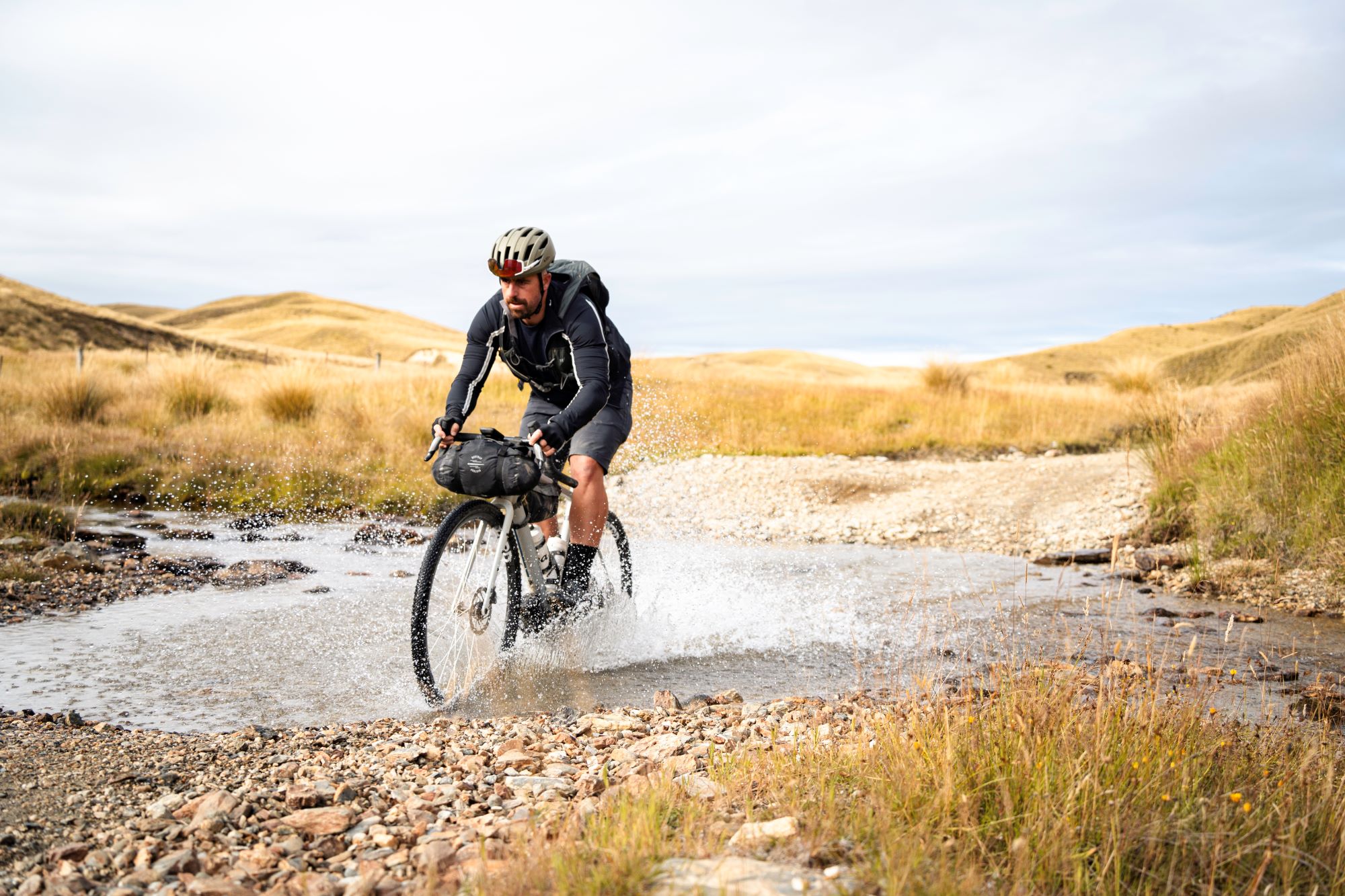
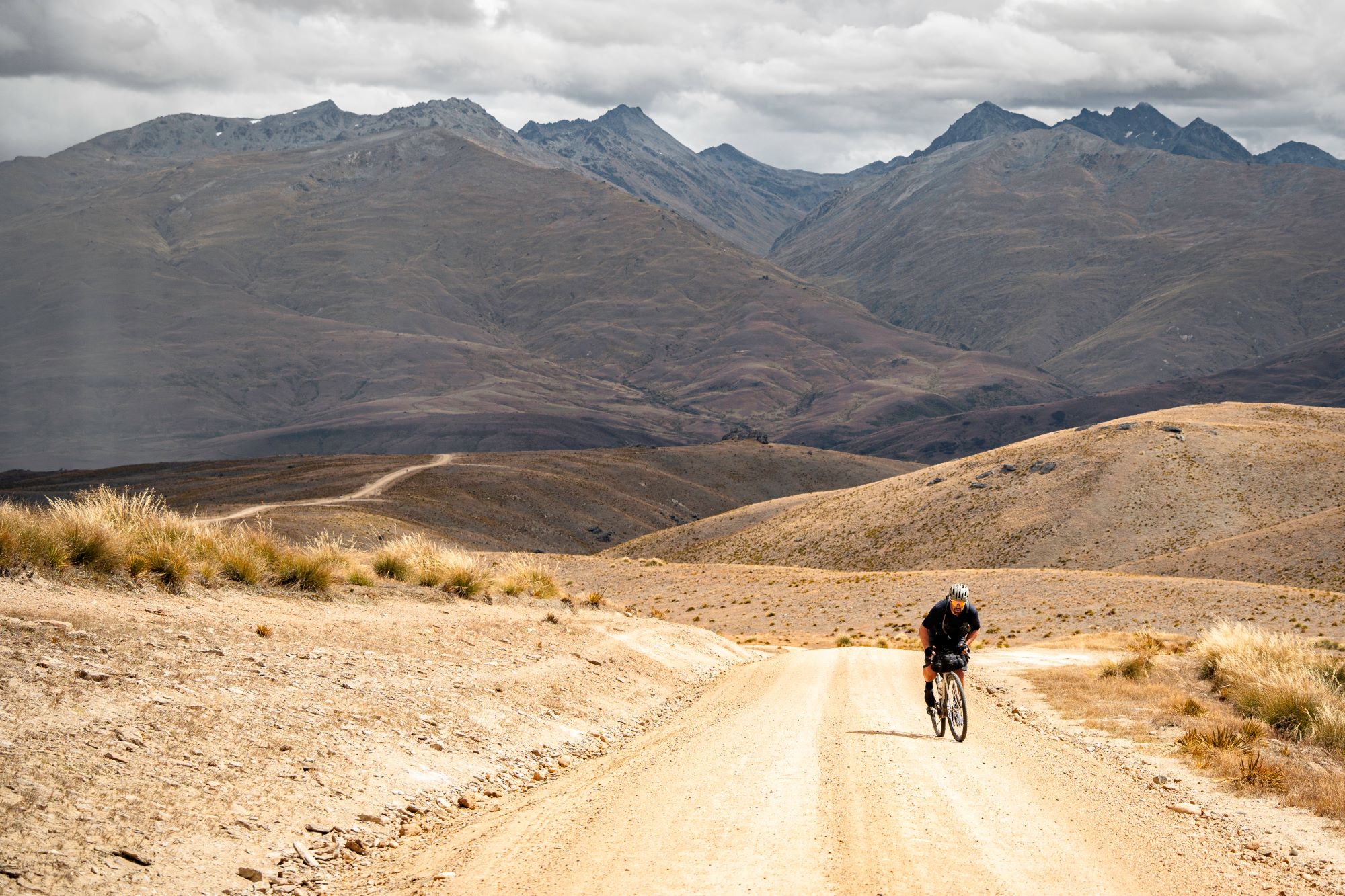
On rolling or flatter terrain, the Chapter 2 KAHA is bloody good! As I said earlier, the response to power isn’t wasted, and it feels swift. The gravel roads often throw things in front of you when you’re not expecting it, which requires a quick response. I found it would respond quickly to any deviation, and the wheelbase length makes it stable. I think the responsive nature is best positioned for more experienced off-road riders, as these types of race bikes can often lead to a bit more fighting with the bike. And sometimes, your incorrect riding lines, deviations, and mistakes are amplified.
The MANA one-piece cockpit is good but didn’t work for me. The narrowness between the hoods was just too small for my wider frame. I understand these are more aero, but for me, comfort is aero. I think a wider MANA handlebar would be more suited to me; however, the stem length at 100mm would make it a little long in terms of reach. When I did get into the flared position, it was again a little narrow but more comfortable than up on the hoods. Perhaps a wider bar with a shorter stem in the one-piece construction would be something Chapter 2 offers sometime soon. The bar does have a round tube shape, which made mounting lights and my computer mount easy.
Overall, this bike performs well and would suit someone more pointed towards the race end of the spectrum. The versatility is great, with a good supply of mounting options for adventure riding, and you could easily put some smaller tyres on (30-32c), which would make it a great all-road bike. The responsiveness, agility, and swiftness are supreme, and one would expect it to perform well over the course of a 200km+ gravel race. Being a frameset-only option allows you to fully customize the build options, meaning you can get all the parts you want from the outset.





